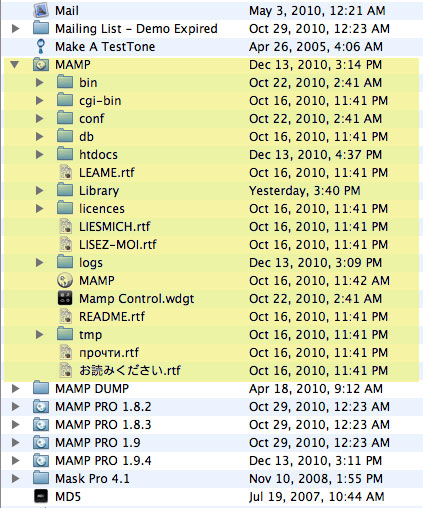Learning PHP is very *easy* especially if you already know ASP.
ASP and PHP are not that very different from each other… (unlike .NET). You just have to wrap your head around a new way of thinking, and maybe learn a few new habits along the way.
Some examples:
In ASP, we enclose commands using the tag <% %>.
In PHP, we use <?php ?> instead.
If you’re lazy, you can use the equivalent <? ?>, which also works… saves you from typing php everytime.
I don’t know what’s the “best practice” for doing this… <?php or just <?
Anyone knows?
For now, I’m using <?php ?> for my programs.
In ASP, you can name your variables simply like this:
Name = "John Doe"
In PHP, you must use a $ sign in front of your variables. The above statement will be written as:
$Name = "John Doe";
Also, a semi-colon “;” is REQUIRED at the end of every statement! Otherwise, you get runtime errors. I sometimes forget about this semi-colon until the browser reminds me about it.
Parse error: syntax error, unexpected T_ECHO, expecting ‘,’ or ‘;’ in /VirtualHosts/TestSite/hello.php on line 6
Sometimes, the error message given does not make it obvious you forgot a “;”. The best thing to do is look at the statement above the line where the error is reported. Chances are the previous statement did not have a “;”.
It’s always good to put comments in your code. In ASP, we just precede every comment line with a quote mark, like this:
' this is an ASP comment
In PHP, we use double slashes…
// this is a PHP comment
This is another ASP habit I need to break when programming in PHP.
One nice feature of PHP that ASP does not have is multi-line comments. In ASP, if I want to disable a portion of my code, I have to precede every line with the quote (‘) mark.
' if not rs.EOF then
' varStoryTitle = rs("StoryTitle")
' varStoryTeaser = rs("StoryTeaser")
' end if
In PHP, I can comment whole sections using /* */.
/*
while ($row = mysql_fetch_array($result)) {
echo "User ID: " . $row["UserID"] . "<br>";
echo "User Name: " . $row["UserName"] . "<br>";
echo "User Password: " . $row["UserPassword"] . "<br>";
echo "<p>";
}; // end while $row=$result
*/
Nice… I like that feature.
In ASP, if you want to output something to the screen, say the value of a variable, we use Response.Write statement.
Response.Write (Name)
In PHP, you can use the “echo” command.
echo $Name;
What else…. okay, Include files. In ASP, if you want to use Include files, you write:
<!-- #include virtual="/dbconnect.asp" -->
In PHP, you write Include files like this:
include('dbconnect.php');
And one thing I discovered that PHP can do (that ASP can’t do) is you can have the name of your include file as a variable! So it will look something like this:
$fname = 'dbconnect.php';
include($fname);
I’m pretty sure I can think of a use for this PHP feature someday….
Also note this: In ASP, string variables must be enclosed in double quotes (“).
In PHP, you can use either double quotes (“) or single quote (‘). So you can do something like this:
$variable = "some content";
$variable = 'some conent';
$variable = 'The movie is called "Lord of the Rings".'
In ASP, I have to write that last line as:
variable = "The movie is called ""Lord of the Rings""."






